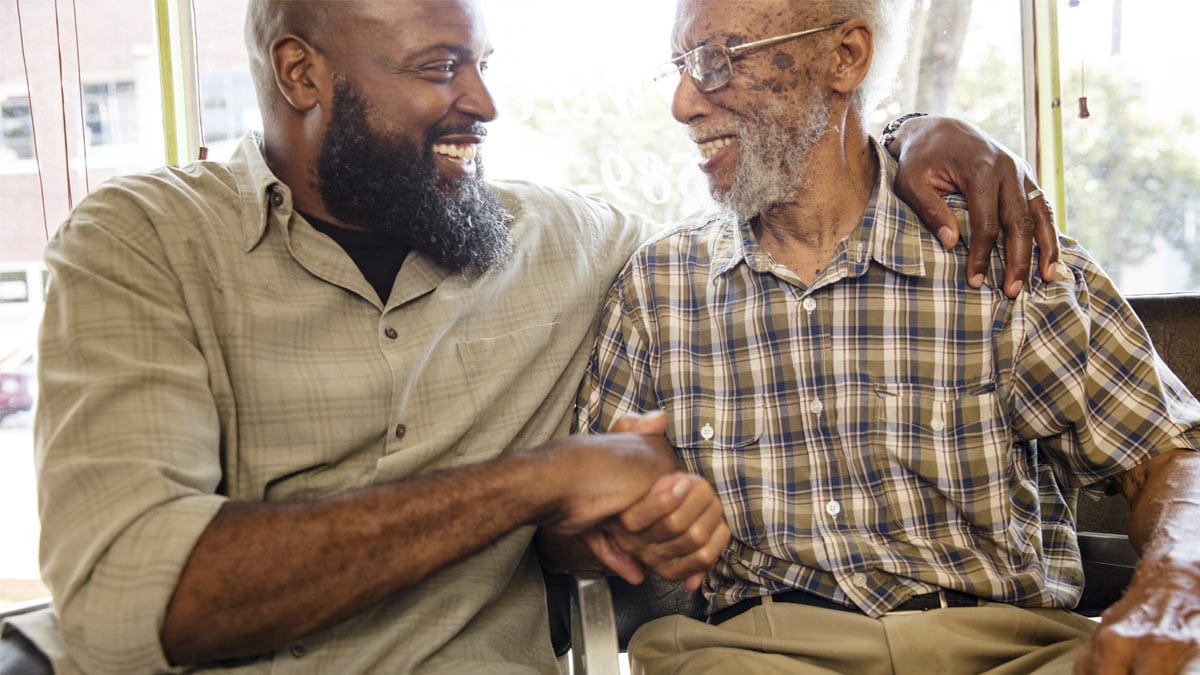At a glance
- Most people who smoke want to quit, and more than half of them try to do so each year.
- Connecting every person who wants to quit with treatment proven to help them quit for good is important for improving people's health.
- Descriptions of strategies that states and communities can use to help people quit smoking are below.

Barriers to quitting
The majority of people who smoke want to quit, and more than half try to do so each year. Among Black adults who smoke cigarettes:
- An estimated 73% of non-Hispanic Black adults who smoke report that they want to quit.1
- Non-Hispanic Black adults are more likely to report attempting to quit in the past year, compared to non-Hispanic White adults (63% vs. 53%).2
Proven treatments, such as FDA-approved medicines and behavioral counseling, make it more likely that people will quit smoking successfully. African American people who smoke can run into barriers when trying to find and use these proven treatments:
- African American people do not always receive clinical advice to quit smoking. Only about 56% of non-Hispanic Black adults who smoke reported receiving this advice in 2015.2
- Among adults who smoke without health insurance, non-Hispanic Black adults are 65% less likely to receive advice to quit than non-Hispanic Whites.3
- Less than 30% of non-Hispanic Black adults who smoke reported using cessation counseling or medication when trying to quit.2
- The use of tobacco-cessation quitlines among non-Hispanic Black people also remains low.4
Connecting people to resources is critical for health equity
What states and communities can do
Provide barrier-free, widely promoted, coverage for all evidence-based cessation treatments by all types of health insurance
For example, as of 2018, only 15 state Medicaid programs fully covered tobacco cessation (quitting) services for all traditional Medicaid enrollees.5
Integrate clinical screening and treatment for commercialA tobacco use in all health care settings and with all types of patients
Community health centers and low-cost health clinics serve people who are more likely to use commercial tobacco products.67 Talking to people about commercial tobacco use and quitting as a regular part of health care visits in these settings will help make sure that all groups can get effective treatment to help them quit.
Increase access to culturally tailored cessation services
When it comes to health issues, one size does not fit all. Different people and communities have different needs, and they make decisions in different ways. In addition, treatment approaches developed by and for Black communities, that build on community values and priorities, may increases the chances that African American people are able to quit tobacco use.8
Share health messages that feature African American people and their experiences
Mass media campaigns are proven to increase smoking cessation, prevent tobacco use initiation, and reduce the prevalence of tobacco use.910 Anti-commercial tobacco messaging and mass media campaigns, like CDC's Tips From Former Smokers® (Tips®) national tobacco education campaign, can feature testimonials from people from many racial and ethnic groups. Evidence shows that non-Hispanic Black people have positive reactions to Tips ads no matter the race or ethnicity of the person in the ad.11
- "Commercial tobacco" means harmful products that are made and sold by tobacco companies. It does not include "traditional tobacco" used by Indigenous groups for religious or ceremonial purposes.
- Gonzalez M, Sanders-Jackson A, Song AV, Cheng K, Glantz SA. Strong smoke-free law coverage in the United States by race/ethnicity: 2000–2009. Am J Public Health. 2013;103(5): e62–e66.
- Babb S, Malarcher A, Schauer G, et al. Quitting Smoking Among Adults—United States, 2000–2015. MMWR Morb Mortal Wkly Rep. 2017;65(52):1457–1464.
- Zhang L, Babb S, Schauer G, Asman K, Xu X, Malarcher A. Cessation behaviors and treatment use among U.S. smokers by insurance status, 2000–2015. Am J Prev Med. 2019;57(4):478–486.
- Marshall LL, Zhang L, Malarcher AM, Mann NH, King BA, Alexander RL. Race/ethnic variations in quitline use among US adult tobacco users in 45 states, 2011–2013. Nicotine Tob Res. 2017;19(12):1473–1481.
- DiGiulio A, Jump Z, Babb S, et al. State Medicaid Coverage for Tobacco Cessation Treatments and Barriers to Accessing Treatments — United States, 2008–2018. MMWR Morb Mortal Wkly Rep. 2020;69(6):155–160.
- Lebrun-Harris LA, Fiore MC, Tomoyasu N, Ngo-Metzger Q. Cigarette smoking, desire to quit, and tobacco-related counseling among patients at adult health centers. Am J Public Health. 2015;105(1):180–188.
- Flocke SA, Hoffman R, Eberth JM, et al. The prevalence of tobacco use at Federally Qualified Health Centers in the United States, 2013. Prev Chronic Dis. 2017;14:160510.
- Webb Hooper M, Antoni MH, Okuyemi K, Dietz NA, Resnicow K. Randomized controlled trial of group-based culturally specific cognitive behavioral therapy among African American smokers. Nicotine Tob Res. 2017;19(3):333–341.
- U.S. Dept of Health and Human Services. Smoking Cessation: A Report of the Surgeon General. U.S. Dept of Health and Human Services, 2020. Accessed January 19, 2021. https://www.hhs.gov/sites/default/files/2020-cessation-sgr-full-report.pdf
- U.S. Dept of Health and Human Services. The Health Consequences of Smoking—50 Years of Progress: A Report of the Surgeon General. U.S. Dept of Health and Human Services, 2014. Accessed January 19, 2021. https://www.ncbi.nlm.nih.gov/books/NBK179276/
- Davis KC, Duke J, Shafer P, Patel D, Rodes R, Beistle D. Perceived effectiveness of antismoking ads and association with quit attempts among smokers: evidence from the Tips from Former Smokers campaign. Health Commun. 2017;32(8):931–938.
